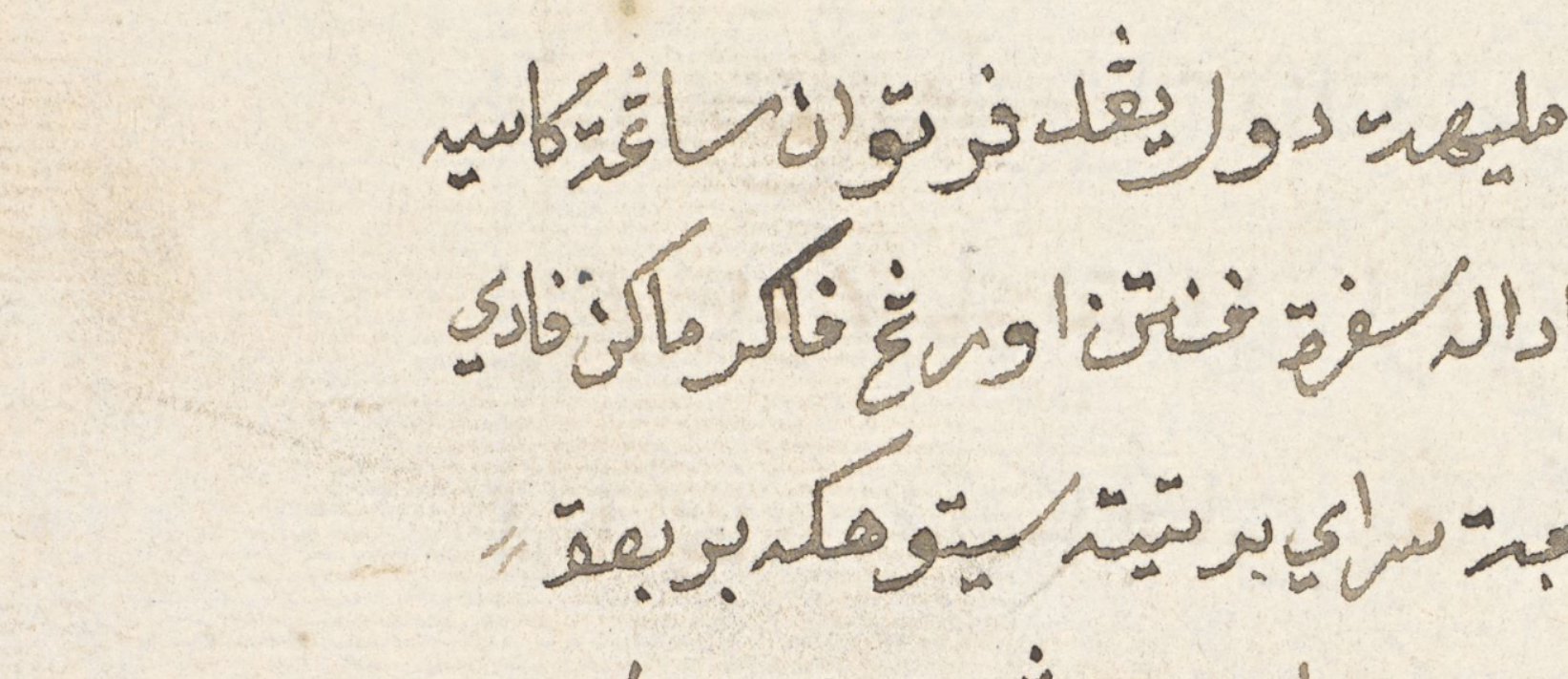Pgr makan padi: Unfencing the bird theory
The opening paragraph of Harry Frankfurt's little book is as follows:
One of the most salient features of our culture is that there is so much bullshit. Everyone knows this. Each of us contributes his share. But we tend to take the situation for granted. . .Frankfurt's view is that the production of bullshit is inevitable in our modern digital landscape since it is stimulated whenever a person's opportunities to speak about some topic exceed his knowledge of the facts that are relevant to that topic (p. 61).
One such bullshit is manufactured on December 18, 2011
when a certain Burhanuddin Al-Helmy (apparently he is not the famous Malay activist who died in 1969) suggested in his Facebook page that our usual form ofPagar makan padiis incorrect and it ought to be rendered as
Pĕgar makan padiHe reasoned that the “problem" was that the “original" form of the word for the subject of the proverb is ڤڬر. With this assumption as starting point, he then argued that since the first Jawi alphabet can be transcribed to pĕ (short vowel ĕ, pepet e) or pa (with short vowel a), you can romanize the word ڤڬر to pĕgar or pagar. And he prefer the latter since it is biologically more accurate if the phrase is to be taken literally. He also forgot the convenient fact that there exists another sister phrase
Pancing makan umpanin which the fishing rod can only be deciphered metaphorically for the phrase to be associated with betray of trust. Apparently the fishing rod cannot consume the bait attached to it, if you want to argue biologically.
The flawed logic, however, is accepted by many pĕgar converts although no evidence was explictly given (e.g. at least one primary material/manuscript must contain the theorized ڤڬر), and these followers wrote pieces of various length to support the theory, some of them even invented another laughable misinformation that the pegar bird was once used by paddy farmers as pest control agent, so that the meaning of the proverb can be preserved.
- Ibu Berbicara (January 1, 2012) Harapkan Pagar, Pagar Makan Padi
- Hafiaz walks miles (January 2, 2012) Harapkan Pegar, Pegar Makan Padi
- Blog Ajak (January 5, 2012) Harapkan Pegar, Pegar Makan Padi (Pembetulan Ayat)
- Zach DxDiag (January 5, 2012) Pegar Yang Makan Padi, Bukan Pagar Makan Padi
- Sandiwara (January 7, 2012) Harapkan pegar, pegar makan padi
- Deyawanny (January 9, 2012) Peribahasa Harapkan Pegar,Pegar Makan Padi rupanya!
- Mewah Bahasa (January 11, 2012) Harapkan pegar, pegar makan padi
- Anekdot (January 12, 2012) HARAPKAN PEGAR...MAKAN PADI
- Cetus Maonx (January 18, 2012) Harapkan pegar, pegar makan padi
- Falcon Biru (January 18, 2012) Harapkan Pegar, Pegar Makan Padi (~)
- Courtesy Corner (January 24, 2012) ~Harapkan Pegar, Pegar Makan Padi~
- Noraini Sahaini (January 27, 2012) [Mesti BACA!]::Harapkan Pegar, Pegar Makan Padi::
- Lestari Bestari (February 25, 2012) Harapkan pegar, pegar makan padi (pepatah yang harus dibetulkan)
- Macam-macam Cerita Ada (Febuary 28, 2012) Harapkan Pagar - Pagar Makan Padi
- Amukan Melayu (March 15, 2012) HARAPKAN PEGAR....PEGAR MAKAN PADI, harapkan mike...mike makan tak ingatkan diri......merintih di bumi sendiri...
- Idris Talu (May 26, 2012) Harapkan pegar, pegar makan padi
- Cintaumairah (November 29, 2012) ...HaraPkan Pegar, Pegar maKan padI...
- Running with the wind (November 30, 2012) Harapkan pegar, pegar makan padi
The most famous pĕgar theorist is perhaps a certain Nor Hisham Osman, a lecturer in Malay Linguistics at the University of Malaya, who published his Mewah Bahasa piece entitled “Pegar makan padi" in Berita Harian. Given that the two events are 24 days apart, it is possible that the piece by Dr. Nor Hisham was inspired by the Facebook content.
Fortunately, the then new Director of Dewan Bahasa dan Pustaka, Prof Awang Sariyan, came to our rescue on February 19. He wrote this on Facebook, demanding evidence from the pĕgar theorist:
“Salam. Jika saya boleh mendapat kepastian, adakah pandangan tentang peribahasa berkaitan dengan pagar dan pegar dinyatakan oleh tokoh besar pejuang kebangsaan Dr. Burhanuddin Al-Helmy atau sebenarnya pendapat pentadbir laman ini? Jika penyataan itu dikeluarkan oleh Allahyarham, mohon nyatakan sumbernya seperti buku, majalah, akhbar atau yang lain. Kesahihan itu penting supaya kita dapat membuat kajian yang mendalam untuk mencari ketepatan tentang sesuatu.
Terima kasih.”
The question asked was:“Salam. Apakah status terkini peribahasa ‘melepaskan batok' dan ‘harapkan pegar, pegar makan padi'? Adakah sudah diterima rasmi oleh DBP atau bentuk lama masih dikekalkan?" (February 19, 2012)
So far, we have zero evidence to prove that ڤڬر was once the spelling used in the Malay proverb. On the contrary, we have many documents to show otherwise. For examples:
- Hikayat Hang Tuah manuscript (dated between 1828 to 1835) British Library Or. 16215, f. 61r.
- Hikayat Hang Tuah manuscript (a sister copy of BL Or. 16215) University of Malaya Library MS 23.
- H. C. Klinkert (1866) Eenige Maleische spreekwoorden en spreeekwijzen, Bijdragen tot de Taal-, Land- en Volkenkunde van Nederlandsch-Indië 13de Deel, [3e Volgreeks, 1e Deel], p. 40
- R. J. Wilkinson (1901) A Malay-English Dictionary, Kelly and Walsh Limited, Singapore, p. 449.
- Muhammad Adnan Muhammad Ariffin (1953) Tikaman Bahasa, The Al-Hikmah Press, Kelantan, p. 290 (see Entry 1992).
- W. G. Shellabear, Sulaiman Muhammad Nor (1956) Kitab Kiliran Budi, Malaya Publishing House Limited, Singapore, p. 75 (see Entry 653).









Comments